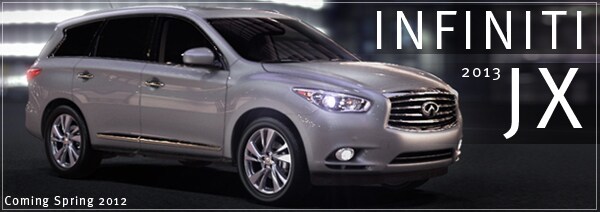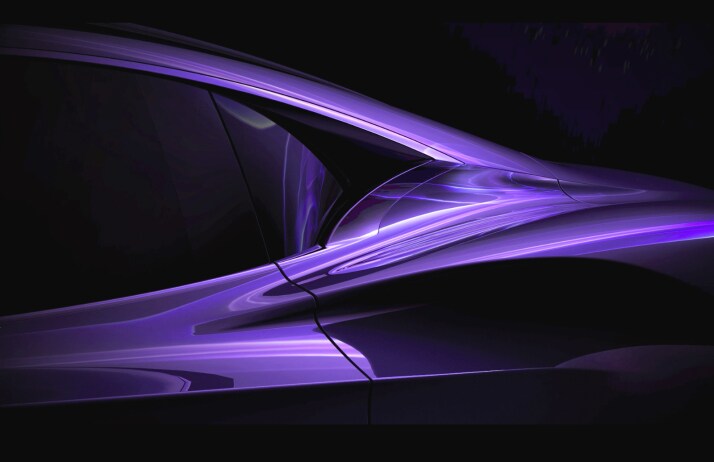
Selected models offer sophisticated systems that enhance the handling capabilities for the vehicle's intended use. Advanced handling technologies include:
Rear Active SteerRear Active Steer is a highly sophisticated, electronically controlled system that steers the rear wheels. It provides quick steering response at slow speeds and stable handling at high speeds.
A dedicated Rear Active Steer computer receives sensor information about steering angle, steering rate, and vehicle speed, and calculates at what speed and which angle the rear wheels should be steered:
- When the driver turns the steering wheel to begin a turn, the computer signals the electric actuator to momentarily and slightly steer the rear wheels opposite the front wheels (opposite-phase steering) by moving the lower control arm.
- Then the wheels return to in-phase steering for the duration of the turning process.
The amount, timing, and direction of rear-wheel steering are highly dependent on vehicle speed:
-At higher speeds, the rear wheels need to quickly generate high in-phase cornering forces in order to help provide maximum stability.
-At lower speeds, a momentary opposite-phase steer helps provide the quick turn-in response that is associated with agility.
The computer reads sensor information for steering angle, steering rate, and vehicle speed before deciding on the appropriate rear-wheel steering response.
-At low speeds, if the driver turns the steering wheel very quickly, the computer will steer the rear wheels in the opposite direction before returning to in-phase steering.
-At high speeds, a similar steering input from the driver will cause the computer to use a high in-phase rear steer angle to enhance stability.
Rear Active Steer will not operate until the vehicle has reached a minimum speed of 12.5 mph. Also, built-in fail-safes ensure that if the Rear Active Steer system fails, the vehicle is returned to its normal, non-rear-wheel-steering state.
4-Wheel Active Steer (4WAS)4-Wheel Active Steer1 (4WAS) combines both front- and rear-wheel active steering.
Using sensors that monitor the driver's steering input and vehicle speed, the system automatically adjusts the variable-ratio steering system and turns the rear wheels slightly - about one degree - to enhance handling stability and steering control.
At the front, a steering sensor measures driver input at the steering wheel and feeds information to the 4WAS control unit. The control unit also monitors road speed and other driving conditions. Under the right conditions, when the driver turns the wheel quickly, the control unit activates the electric motor and "boosts" the driver's steering input. The motor actually turns the steering shaft faster than any driver could physically move the wheel. It doesn't turn the front wheels any farther than the driver would - it just gets them there more quickly.
At the same time, at the rear wheels, the control unit changes rear suspension geometry to physically turn the rear wheels in time with the front wheels. Unlike some rear-wheel steering systems, which rely on bushings deflecting under a cornering load, 4WAS physically turns the rear wheels to complement the front wheels' steering angle.
The system works seamlessly, synchronizing the steering ratio of the front wheels with the rear suspension geometry to provide quick steering response at lower speeds and stable handling at higher speeds.
Auto-Leveling Rear SuspensionAuto-leveling rear suspension systems are designed to help keep the back of the vehicle level when towing or carrying heavy cargo. The result is enhanced handling stability and ride quality as well as helping to maintain uniform ground clearance.
Key components of the system include rear shock absorbers equipped with air bladders, an on-board air compressor, and a rear ride height sensor.
When the rear ride height sensor detects a heavy load in the vehicle, it activates the on-board air compressor, which sends air pressure to the shock absorbers. The air compressor shuts off when normal ride height is reached; the system will help maintain that height as the load increases or decreases.
Once the load is removed, the sensor signals the system to release the air in the shocks, and the vehicle returns to its normal ride height.
Hydraulic Body-Motion Control (HBMC) SystemHydraulic Body-Motion Control is a unique suspension technology developed for full-size SUVs. The advantages of this system are enhanced control of body lean when cornering, improved ride comfort and handling, and consistent ground clearance when driving.
Each shock absorber contains upper and lower hydraulic fluid chambers that are connected to the others via front-to-rear and side-to-side piping. The system controls shock absorber length by varying hydraulic pressure to the upper and lower chambers.
When cornering, momentum causes a vehicle to lean to the outside of the turn. This causes the outside suspension to compress while the inside extends in length. To compensate for this, HBMC transfers hydraulic fluid into the upper chamber of the outside shock absorbers, extending their length, and lower chambers of the inside shock absorbers, reducing their length. This counter-action helps keep the body level.
This system eliminates the stabilizer bar that normally would be used to help control body lean while cornering. This allows each wheel to operate independently from the opposite side for longer suspension travel.
The HBMC system consists of the following components:
-Four shock absorbers with upper and lower hydraulic chambers that can vary in length based on fluid pressure in each chamber.
-Two hydraulic fluid accumulators that collect the differential pressures from the chambers in each shock absorber.
-One Passive Pressure Maintenance Unit (PPMU) that directs the system to pressurize the chambers in individual shock absorbers.
-Hydraulic piping that connects the components together as a system.
Active Trace ControlActive Trace Control helps enhance steering response and cornering feel by using the Vehicle Dynamic Control (VDC) system to selectively apply brake pressure. When cornering, the system helps enhance the transition from braking to accelerating by applying brake pressure to increase the load on the front wheels. In side-to-side turns and other steering maneuvers, it engages the brakes on the inside of the turn to help turn the vehicle.
Active Trace Control is engaged automatically, whether the driver is applying the brakes or not. When Sport mode is engaged, the level of Active Trace Control assistance is reduced.
Continuous Damping Control (CDC)
CDC helps enhance vehicle stability by minimizing vertical body movements on hilly roads and helping to reduce body lean in corners. The system receives inputs from multiple sensors to determine the best shock absorber damping rate for each driving condition.
Electronic control allows the driver to select one of two damping modes: Auto, for automatic electronic control of damping, or Sport, for maximum damping and a firm-feeling suspension at all times.






